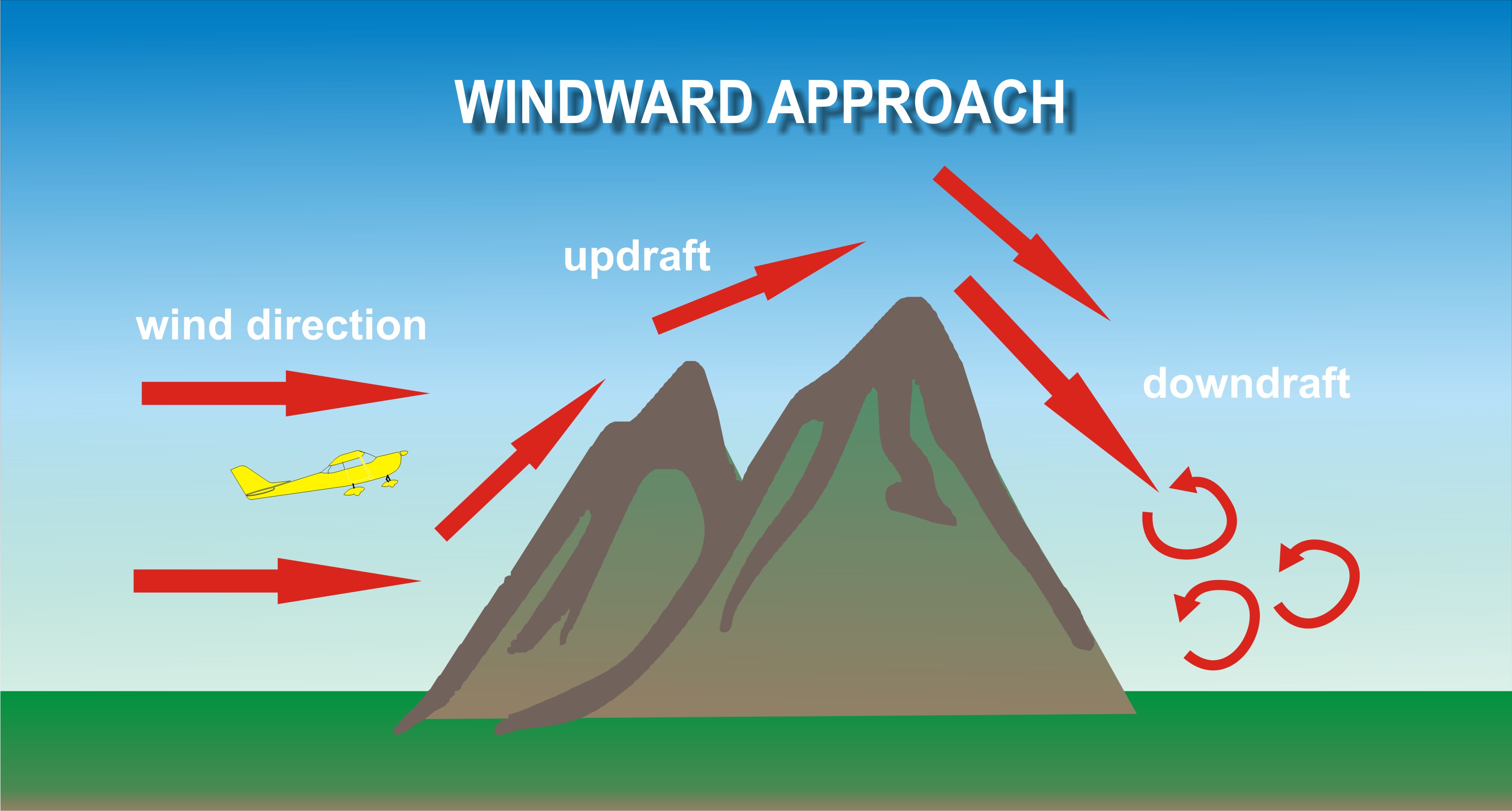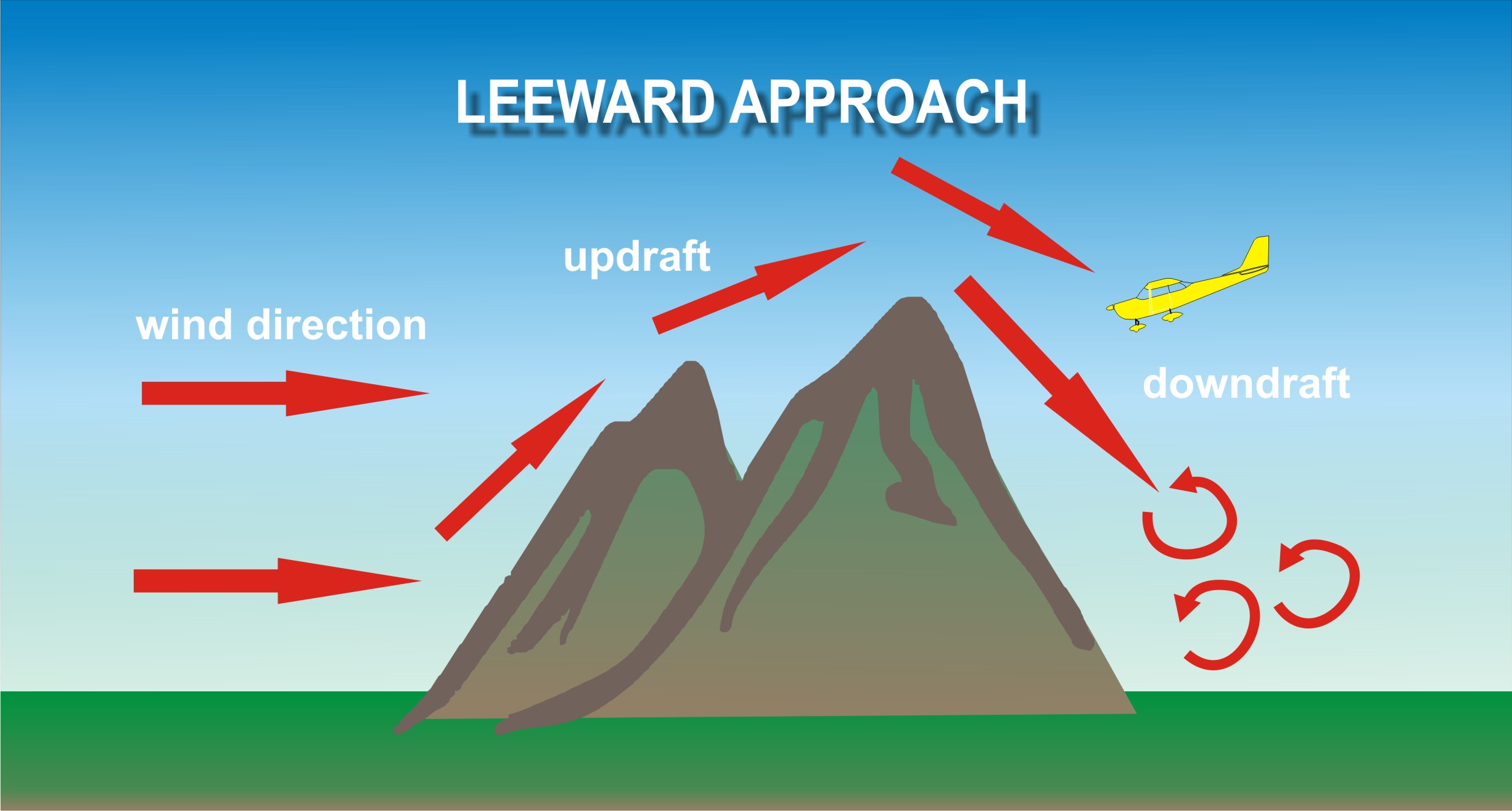The trouble with downdrafts, just like wind, is that you usually cannot “see” these things coming, but only the effects. Downdrafts can cause pants-wetting moments, or even be lethal if you are unprepared or have little idea of what is happening.
How do you know you are in a downdraft?
Well, let me explain it like this – you are flying along happily at 7500ft, when suddenly you start feeling a couple of bumps of turbulence, then suddenly you notice your altimeter spiralling with decreasing numbers. This becomes confusing, especially if your aircraft appears to be straight and level, you have increased power, but your vertical speed indicator shows that you are still descending at 1000ft per minute. Raising the nose and applying full power may do little to alleviate the situation.
Anticipating downdrafts
You can anticipate the effects of downdrafts if you understand what causes them, and where you are most likely to find them. Downdrafts are most commonly found in the vicinity of mountainous terrain, as well as thunderstorm activity.
To start with, mountainous terrain, does not only mean peaks equating to the size of the Alps, but any ridge which rises above the surrounding terrain. The key component is wind. It blows from a given direction, and when it encounters a rise in terrain (such as a ridge or a mountain), it is forced upwards (causing an updraft). The air is compressed over the top and then moves downwards rapidly on the other side (Leeward side) causing a downdraft and turbulence. This effect can become more pronounced if there are several ridges in succession, or continuously rough terrain.
So when can you anticipate downdrafts? Always choose your routes carefully when it comes to mountainous or even very hilly terrain. Things might feel quite smooth if you are approaching the mountain from the windward side (in other words you are going in the same direction as the wind), so this could give you a false sense that everything is cool. The problem comes in as you go over the highest point as this is where you are likely to encounter the dreaded downdraft and turbulence. Keep a look out for those seemingly innocent lenticular clouds, as they are a sure sign of mountain wave activity. In the opposite sense, if you are approaching into or against the wind (leeward side), warning signs may be more obvious – turbulence will start to bounce you and your passengers around the closer you get towards the mountain. The problem with anticipating is determining severity – could it just be light turbulence or something more serious?
Thunderstorms
Another known breeder of downdrafts are thunderstorms. These are a little more obvious to spot, and easier to predict. Those dark Charlie Bravos (Cumulonimbus clouds) can be avoided, but bear in mind that the effects can be felt up to 25km away! You may also find yourself being closed in by several fast moving storms. The major warning signs are significant updrafts which are experienced when you are some distance from the centre of the storm – move away if you can! If you find yourself having no choice but to pass through the storm, you are likely to experience severe turbulence, downdrafts in the centre, and serious precipitation.
Here are some suggestions of what you should do:
- Check the wind direction for the portion of your route that has mountainous terrain. Wind direction will help you determine if you are approaching from the windward side or the leeward side.
- Wind speed is critical in determining the severity of possible downdrafts – the stronger the winds the stronger the downdraft will be. Be warned that wind speed can be multiplied by at least three times in most downdrafts!
- Know the performance of your aircraft – most light aircraft will not be able to out climb a severe downdraft.
- Never approach a mountain head on at 90 degrees – if you encounter a downdraft you will not be able to escape quickly, and a steep turn could put you face to face with the terrain. Rather approach at 45 degrees, which gives you space to manoeuvre away, should the need arise.
- Always keep an eye on your groundspeed and VSI. If your groundspeed has significantly reduced, and your VSI is indicating a rapid rate of descent you could be in a serious downdraft.
- Do not try to out climb a downdraft. If you have full power and the best angle of climb, yet your VSI is still indicating a rapid rate of descent, this shows you are not going to win. Instead, level off, and move away from the area of the downdraft as quickly as you can, even if it means extending your route to a calmer area.
- In the case of a storm, avoid these as far as possible, by going around them! If you do get caught, strap in tightly, do not try and out climb the downdraft, rather apply full power, stay level and try to get through as quickly as possible.
- Talk to ATC or flight info services, they may have reports (pireps) from other aircraft regarding turbulence in the area. Similarly, inform others if you encounter such conditions.
- File a flight plan – ALWAYS! It may save your life if things veer out of your control.
If you have ever experienced a serious downdraft, tell us about it in the comments section below.






Trackbacks/Pingbacks